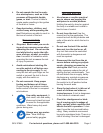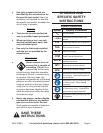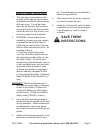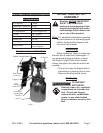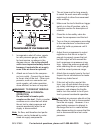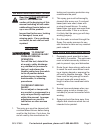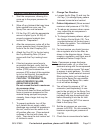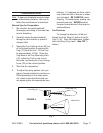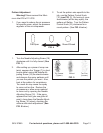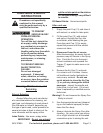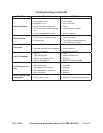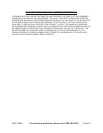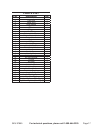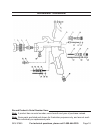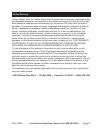
SKU 97855 For technical questions, please call 1-800-444-3353. Page 14
7. Disposal: After cleaning your Spray
Gun, properly dispose of your clean-
ing solutions according to the solution
manufacturer’s direction and local
hazardous waste standards.
Note: These procedures are in addition to
the regular checks and maintenance
explained as part of the regular op-
eration of the air-operated tool.
8. Daily - Air Supply Maintenance:
Every day, perform maintenance on
the air supply according to the manu-
facturers’ instructions. Performing
routine maintenance on the air sup-
ply will allow the tool to operate more
safely and will also reduce wear on
the tool.
9. Quarterly (every 3 months) - Tool
Disassembly, Cleaning, and In-
spection:
Have the internal mechanism cleaned
and inspected by a qualied techni-
cian.
TROUBLESHOOTING
Spray Pattern Diagnosis
The Patterns below resemble
symptoms of spray pattern problems.
Please refer to the accompanying
possible problems if you are
experiencing similar difculties. The
solution to each problem follows the
problem in parentheses.
Problem 1:
1. The Pattern Control Knob (10) is par-
tially closed. (Open Pattern Control
Knob (10).)
2. The material is too thick. (Thin mate-
rial according to the manufacturer’s
instructions.)
3. The air pressure is too low. (Increase
air pressure within the Maximum PSI
(115).
Problem 2:
1. High air pressure. (Reduce air pres-
sure.)
2. Not enough uid. (Increase uid.)
3. Pattern Control Knob (10) open too
much. (Partially close Pattern Control
Knob (10).)
Problem 3:
1. Air Cap (1) plugged. (Clean the Air
Cap (1).)
2. Air cap (1) loose or dirty seat. (Clean
Air Cap and threads with a stiff bristle
brush such as an old toothbrush,
wipe, reinstall and tighten.)
3. Dried material on Fluid Nozzle (4).
(Use a nonmetallic point to clean the
Fluid Nozzle (1).
Problem 4:
1. Dirt on one side of the uid nozzle.
(Clean the uid nozzle.)
2. Holes on one side of the Air Cap (1)
are plugged. (Clean the Air Cap (1)
with a nonmetallic point.) Some of
the holes in the Air Cap (1) are very
small. You may want to consider an
ultrasonic cleaner for this job.



